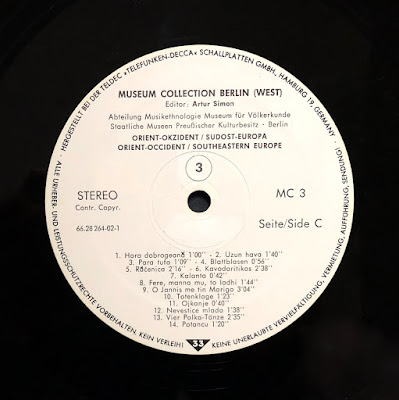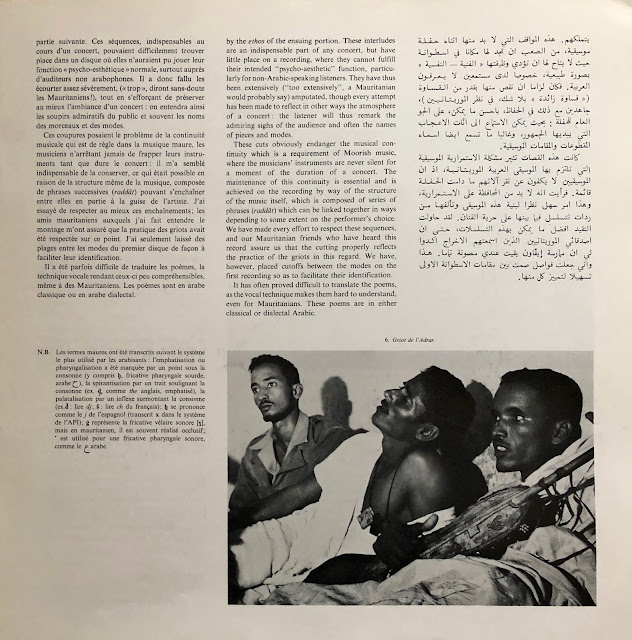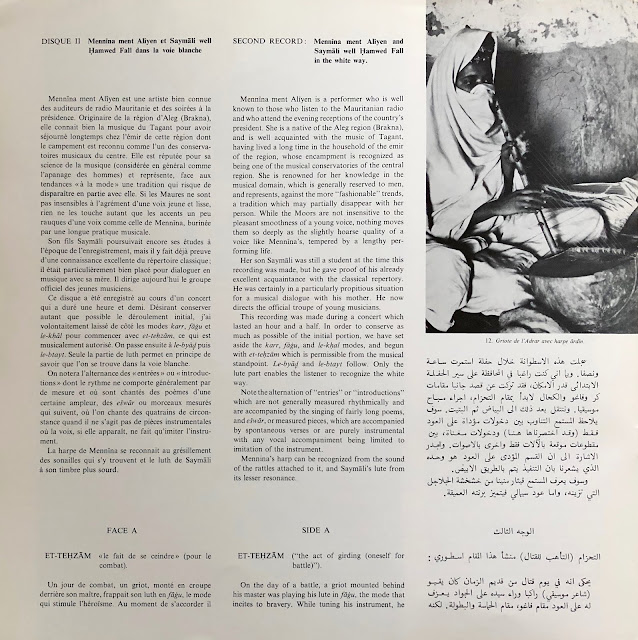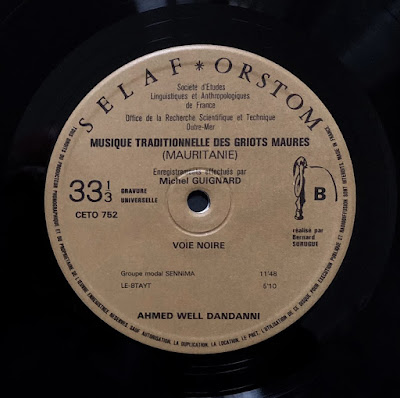TURKEY / GREECE / MACEDONIA / KOSOVO / BOSNIA / ROMANIA / CROATIA
Orient - Okzident – Musik Aus Südost-Europa – Museum Collection Berlin MC3, recorded by Wolf Dietrich, 1968-1980 (2 LPs)
Orient - Okzident – Musik Aus Südost-Europa – Museum Collection Berlin MC3, recorded by Wolf Dietrich, 1968-1980 (2 LPs)
Please note that the blog now includes embedded music listenable directly on the blog.
This fascinating panorama of Southeastern European musical traditions from Turkey, Greece, Macedonia, Croatia, Bosnia and Romania features intense, inspired musical forms that absolutely exude emotion, ranging from joyful and exhuberant to abstract and minimal, and testify to the vibrant traditional rural cultures from a bygone era.
The 40 tracks on this double LP, recorded by Wolf Dietrich between 1968 and 1980, are presented as follows:
The 40 tracks on this double LP, recorded by Wolf Dietrich between 1968 and 1980, are presented as follows:
Typical Instrumental Forms
Stringed Instruments, Oboe and Drum
(Tracks A1-A8)
Influences from the Epoch of the Osmanli Turks
(Tracks B1-B9)
Old Forms
(Tracks C1-C14)
Influences from Central Europe
(Tracks D1-D9)
Veuillez noter que le blog propose désormais de la musique intégrée que l’on peut écouter directement sur le blog.
Ce panorama fascinant des traditions musicales des pays du sud-est de l’Europe, notamment la Turquie, la Grèce, la Macédoine, la Croatie, la Bosnie et la Roumanie, présente des musiques intenses et inspirées qui expriment des émotions allant du joyeux et de l’exubérant à de l'abstrait et au minimal, qui témoignent de la vitalité et de la richesse des anciennes cultures traditionnelles rurales de la région.
Les 40 titres de ce double album enregistrés par Wolf Dietrich entre 1968 et 1980 sont présentés comme suit:
Formes instrumentales typiques
Instruments à cordes, hautbois et tambours
(Pistes A1-A8)
Influences Ottomanes
(Pistes B1-B9)
Formes anciennes
(Pistes C1-C14)
Influences d'Europe centrale
(Pistes D1-D9)
I also include a mix of tracks selected from the double LP you can listen to below, as well as download as separate, numbered tracks in Flac and MP3.
Download a mix of individual tracks selected from the double LP
MP3
Photographs below are from Les Instruments de Musique Populaires by Alexandre Buchner, Gründ, 1969:
















































